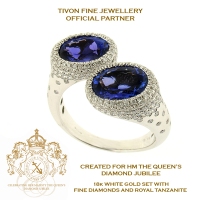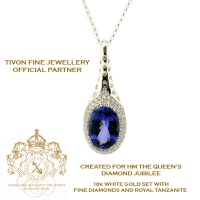Pearls – Up until fairly recently only Royalty and the rich and famous were able to wear them. However this all changed when it was discovered how to culture pearls.
 Pearls are the oldest of the known gems, the oldest being the Jomon Pearl (at approximately 5,500 years old). This pearl was named after the Jomon era in ancient Japanese history (10,000 – 300BC). More recently pearls have been drunk after being crushed into a glass of wine by Thomas Gresham, to win a bet with the Spanish Ambassodor. He hosted the costlier feast in honour of Queen Elizabeth.This pearl was valued at around £15,000!
Pearls are the oldest of the known gems, the oldest being the Jomon Pearl (at approximately 5,500 years old). This pearl was named after the Jomon era in ancient Japanese history (10,000 – 300BC). More recently pearls have been drunk after being crushed into a glass of wine by Thomas Gresham, to win a bet with the Spanish Ambassodor. He hosted the costlier feast in honour of Queen Elizabeth.This pearl was valued at around £15,000!Although most people believe that Mikimoto developed the cultured pearl, it was in fact initially developed by British biologist William Saville-Kent who later shared his ideas with the Japenese. I have to thank my father for this titbit of information as it was mentioned in a book he read. ‘Kate Summerscale‘s book The Suspicions of Mr Whicher‘ Something that we had not been aware of before!
Today, most pearls are farmed rather than caught in the wild. They can be classed into two different categories; firstly, Akoya, South Sea and Tahitian, which are all beaded cultured pearls. Beaded means that a bead, often of Mother-of-pearl, is inserted into the oyster. It is then left for varying lengths of time, depending on the size of pearl that you wish to achieve. The second group are non-beaded, freshwater pearls and, for this method of cultivating pearls, a small piece of organic material is implanted into the mantle (the inside edge of the oyster or mussel). These are often called Biwa or Chinese pearls.
 Today, primarily, we deal with a London based pearl company that has some of the highest grade, quality pearls you can find. I remember a few years ago I was told about a fantastic pearl necklace that took years to assemble as this company wanted each pearl to be a perfect match for shape, colour and size yet still have brilliant lustre. We now have a selection of pearls from both the Takara and Yoko ranges. You can find out a little bit on these pearls on our website. Click here for Yoko pearls and here for Takara.
Today, primarily, we deal with a London based pearl company that has some of the highest grade, quality pearls you can find. I remember a few years ago I was told about a fantastic pearl necklace that took years to assemble as this company wanted each pearl to be a perfect match for shape, colour and size yet still have brilliant lustre. We now have a selection of pearls from both the Takara and Yoko ranges. You can find out a little bit on these pearls on our website. Click here for Yoko pearls and here for Takara.Choosing the pearls that we stock can be very challenging for us not to mention when our extensive range is viewed. To choose pearls for necklaces, we look at bundles of 10 or more in 16″ lengths. All the lengths of a bundle are of similar quality. The main qualities we look for when choosing round pearls (of which these form the main part of our selection), are the shape and lustre of the pearls. The overall finish is also important but pearls take on a ‘life of their own’ when they have great lustre. This sheen is what makes pearls famous.
 When choosing pearls – especially white/cream pearls – it is important to have a white background that you can place them on. This helps you to see the differing colours and hues, that all pearls have. It is also important to try the pearls on, or at least hold them to your skin, as the pearls may need to have whiter or creamier/yellower tones so as to be complimentary.
When choosing pearls – especially white/cream pearls – it is important to have a white background that you can place them on. This helps you to see the differing colours and hues, that all pearls have. It is also important to try the pearls on, or at least hold them to your skin, as the pearls may need to have whiter or creamier/yellower tones so as to be complimentary. If you already have pearl jewellery in your collection, remember that it is often possible to match the quality and colour of pearls to the ones you have. Although it can take time to find the right colour and, if the pearls are old or have been well worn, it may be that it is almost impossible to find exactly the same colour.
If you already have pearl jewellery in your collection, remember that it is often possible to match the quality and colour of pearls to the ones you have. Although it can take time to find the right colour and, if the pearls are old or have been well worn, it may be that it is almost impossible to find exactly the same colour.Freshwater pearls originally had a bad press because of the poor general shape and lustre. This has now largely been overcome and due to the way they are produced has allowed a large selection of pearls at prices that would have been unbelievable, only 10 years ago.
Finally, when wearing pearls remember the mantra, ‘last items on, first items off’. Pearls will naturally absorb perfumes etc. and, to keep them in best condition, they should be wiped with a very slightly damp and soft cloth when being stored after wearing.
We have a large range of pearl jewellery in both stores.
In another blog post, I shall be looking into the differing types of pearls.
Thanks for reading!



